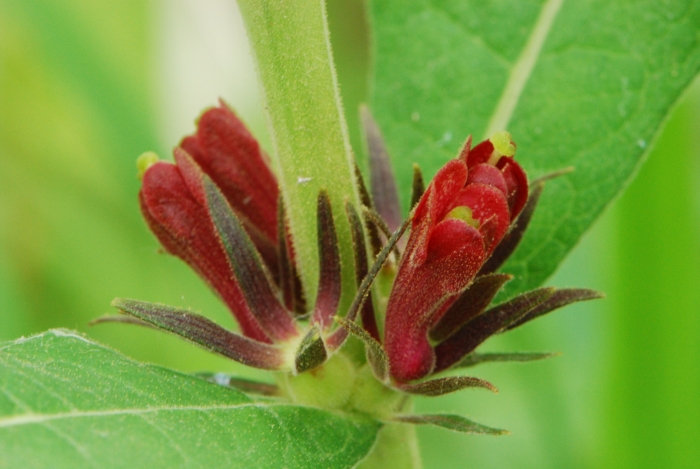Orangefruit Horse-Gentian
(Triosteum aurantiacum)
Orangefruit Horse-Gentian (Triosteum aurantiacum)
/
/

Joshua Mayer
CC BY-SA 2.0
Image By:
Joshua Mayer
Recorded By:
Copyright:
CC BY-SA 2.0
Copyright Notice:
Photo by: Joshua Mayer | License Type: CC BY-SA 2.0 | License URL: https://creativecommons.org/licenses/by/2.0/ | Uploader: wackybadger | Publisher: Flickr |
























































Estimated Native Range
Summary
Triosteum aurantiacum, commonly known as orangefruit horse-gentian, is a perennial herb native to rich woodlands and forest edges in the Northeastern and North Central USA and Southern Canada. It typically grows from 2 to 4 feet (0.6 to 1.2 m) in height and features lanceolate leaves with a slightly wrinkled texture. The plant produces small, tubular flowers that are usually yellow to orange, blooming in late spring to early summer. These flowers are not particularly showy but are followed by ornamental, orange to red berries in the fall. The berries are somewhat reminiscent of small tomatoes, hence the common name. Orangefruit horse-gentian is valued for its medicinal uses by Native Americans and its potential as a coffee substitute when the roots are roasted.
In the garden, Triosteum aurantiacum is appreciated for its ease of maintenance and the interest provided by its berries. It is suitable for naturalistic plantings, woodland gardens, and borders. It prefers partial shade to full sun and adapts well to a variety of soil conditions, provided they have medium drainage. While it is not commonly found in cultivation, it can be a unique addition to a native plant garden. It is generally pest-free but can be susceptible to rust and leaf spot diseases. It is not known for being invasive or having aggressive roots.CC BY-SA 4.0
In the garden, Triosteum aurantiacum is appreciated for its ease of maintenance and the interest provided by its berries. It is suitable for naturalistic plantings, woodland gardens, and borders. It prefers partial shade to full sun and adapts well to a variety of soil conditions, provided they have medium drainage. While it is not commonly found in cultivation, it can be a unique addition to a native plant garden. It is generally pest-free but can be susceptible to rust and leaf spot diseases. It is not known for being invasive or having aggressive roots.CC BY-SA 4.0
Plant Description
- Plant Type: Herb
- Height: 2-4 feet
- Width: 1-3 feet
- Growth Rate: Moderate
- Flower Color: Purple, Red
- Flowering Season: Spring, Summer
- Leaf Retention: Deciduous
Growth Requirements
- Sun: Full Sun, Part Shade
- Water: Medium
- Drainage: Medium
Common Uses
Bird Garden, Butterfly Garden, Low Maintenance
Natural Habitat
Rich woodlands and forest edges
Other Names
Common Names:
Scientific Names: Triosteum aurantiacum , Triosteum perfoliatum var. aurantiacum
GBIF Accepted Name: Triosteum aurantiacum E.P.Bicknell